


Pilates has fast become the go-to workout style for many looking to improve their core strength and flexibility through a low-impact exercise routine. So if you’re in search of the best Pilates moves that can help you achieve both these goals, we’ve got just the list you can add to your workout plan. Whether you’re a gym veteran or a beginner, these Pilates exercises will help you attain the agile and toned body of your dreams!
Introduction to Pilates
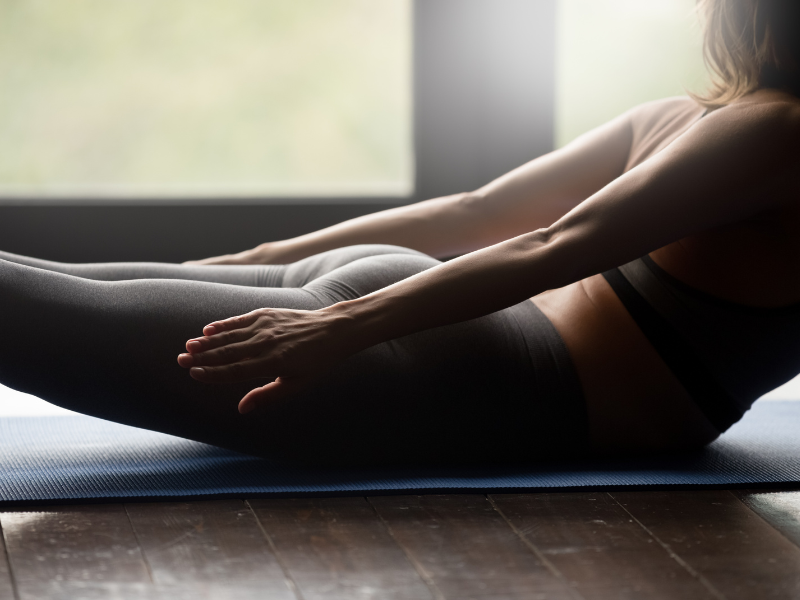
Originally developed by Joseph Pilates, Pilates was designed to focus on core strength, flexibility, and overall body awareness. While other strength training routines usually revolve around heavy weights, Pilates involves bodyweight, resistance bands, or specialized equipment like the Pilates reformer machine that helps with toning the muscles. Aside from targeting both the deep and superficial abdominal muscles, it also targets muscle groups that include the thighs, glutes, and arms.
Pilates exercises aren’t just about physical fitness either; they also work the mind and its ability to control your body during the routine. Whether you choose to do mat Pilates, rehabilitation Pilates, or reformer Pilates, they can all be modified to suit different fitness levels, offering a low-impact but effective workout.
You can also train under the guidance of a Pilates instructor or an ACE-certified personal trainer who can ensure proper form and technique. There are certainly many benefits to gain from incorporating Pilates moves into your routine, and it might be just what your fitness journey needs for strengthening, flexibility, and more.
Discover more about Pilates:
Wall Pilates For Weight Loss: A Guide To The Best Exercises
Pilates Workout: What Is It, its Benefits and Tips on Getting Started
Core Strengthening Exercises
Pilates exercise targets a range of different muscle groups, but the core is one of the most important ones. Below are some of the best Pilates moves you can try in order to get that flat stomach and add strength to your upper body.
1. The Pilates Hundred
How to do:
- Lie flat on your back with your knees bent and lifted so your shins are parallel to the floor (tabletop position).
- Lift your head, neck, and shoulders off the mat, pulling your belly button toward your spine to engage your core.
- Extend your arms straight alongside your body, a few inches above the mat, palms facing down.
- Straighten your legs to a 45-degree angle if you can, or keep them bent if needed for support.
- Begin pumping your arms up and down with small, quick movements, inhaling for 5 arm pumps and exhaling for 5 pumps.
- Repeat the breathing cycle until you reach 100 pumps, then gently lower your body back down to the mat.
2. Single Leg Stretch
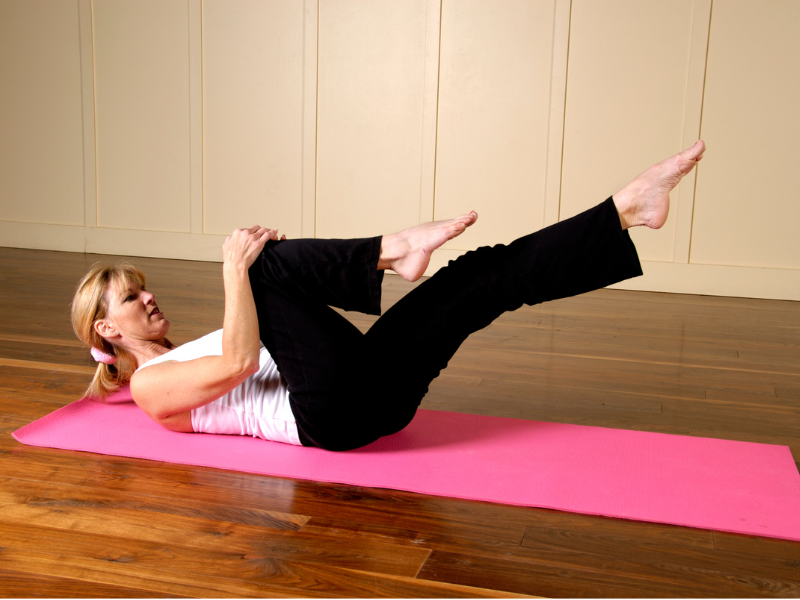
How to do:
- Lie on your back with your knees pulled into your chest.
- Lift your head, neck, and shoulders off the mat, engaging your core.
- Extend your right leg out at about a 45-degree angle while holding your left knee with both hands (one hand on the knee, the other on the ankle).
- Switch legs by pulling your right knee in and extending your left leg out, keeping your movements smooth and controlled.
- Continue alternating legs, inhaling on one switch and exhaling on the next, keeping your core tight and your shoulders lifted off the mat.4. Leg Circles
How to do:
- Lie flat on your back with one leg extended on the mat and the other leg reaching straight up toward the ceiling.
- Engage your core, keeping your hips anchored and arms pressing gently into the mat by your sides.
- Inhale as you cross the lifted leg over the midline of your body, then circle it down, around, and back to the starting position.
- Exhale as you complete the circle, keeping the movement controlled and your pelvis stable.
- Complete several circles in one direction, then reverse the direction, maintaining a steady breath and tight core throughout.
3. Roll Up
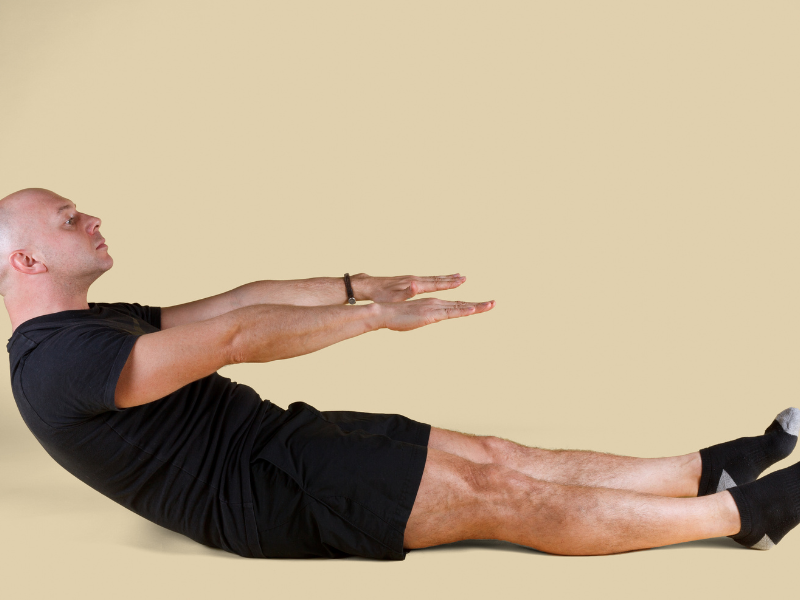
How to do:
- Lie flat on your back with your legs extended straight and arms reaching overhead, just off the floor.
- Inhale as you lift your arms toward the ceiling, then lift your head, neck, and shoulders off the mat, engaging your core.
- Exhale as you slowly roll your spine off the mat one vertebra at a time, reaching your arms forward toward your toes.
- Inhale at the top as you lengthen over your legs, maintaining a C-curve in your spine.
- Exhale as you roll back down with control, lowering your spine to the mat one vertebra at a time, returning your arms overhead to the starting position.
Explore wall Pilates:
28-Day Wall Pilates Challenge For Strength and Weight Loss
Wall Pilates Workout For Beginners: 5 Simple Exercises To Try
Stretching and Flexibility Exercises
5. Spine Twist
How to do:
- Sit tall on the mat with your legs extended straight in front of you, feet flexed, and arms stretched out to the sides at shoulder height.
- Engage your core and lift through the crown of your head, keeping your spine long and shoulders relaxed.
- Inhale to prepare, sitting even taller.
- Exhale as you twist your torso to one side, reaching through your fingertips while keeping your hips stable.
- Inhale to return to center, maintaining length through your spine.
- Exhale as you twist to the opposite side, moving with control and keeping the movement isolated to your upper body.
6. Cat-Cow Exercise
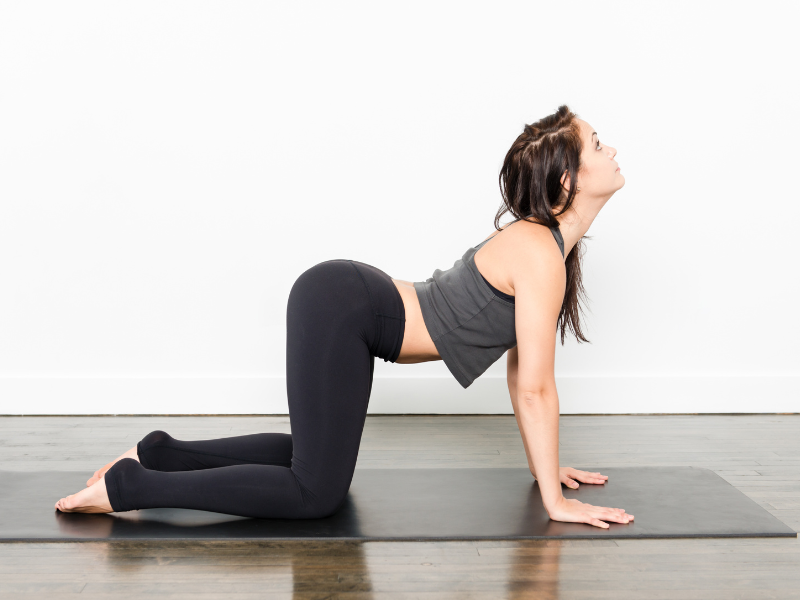
How to do:
- Start on all fours with your wrists under your shoulders and your knees under your hips.
- Inhale as you arch your back, lifting your head and tailbone toward the ceiling (Cow position).
- Exhale as you round your spine toward the ceiling, tucking your chin to your chest and drawing your belly button toward your spine (Cat position).
- Move slowly and smoothly, flowing between Cow and Cat with each inhale and exhale.
- Continue alternating for several breaths, maintaining steady, controlled movement and keeping your core lightly engaged.
7. The Saw
How to do:
- Sit tall on the mat with your legs extended wide apart and arms stretched out to the sides at shoulder height.
- Inhale to prepare, lifting through the crown of your head and engaging your core.
- Exhale as you twist your torso to one side, reaching your front hand toward the outside of your opposite foot.
- Inhale as you stretch deeper, reaching past your little toe while keeping your back arm lifted and your hips grounded.
- Exhale as you roll up, untwisting back to center with control.
- Repeat on the other side, maintaining length through your spine and smooth, controlled breathing.
8. Forward Spine Stretch
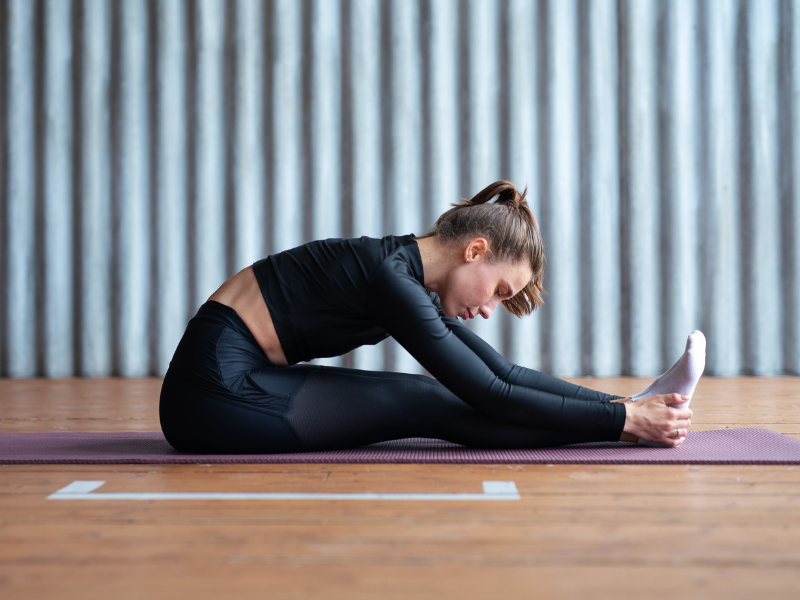
How to do:
- Sit tall on the mat with your legs extended straight in front of you, feet flexed and slightly apart, arms reaching forward at shoulder height.
- Inhale to prepare, lifting through your spine and engaging your core.
- Exhale as you reach forward, articulating one vertebra at a time, creating a deep C-curve in your spine without collapsing your chest.
- Inhale as you stretch a little further, keeping your shoulders relaxed and your hips grounded.
- Exhale as you roll up slowly, stacking your spine back up to the starting position, one vertebra at a time.
- Repeat the movement with control, focusing on length and articulation through your spine.
Benefits of Pilates
The following are a few of the many benefits that you can gain from practicing Pilates exercises regularly:
- Builds Core Strength: Pilates is fantastic for toning and strengthening your abdominal muscles, helping with overall body stability.
- Boosts Flexibility and Balance: The exercises improve flexibility, balance, and coordination, making your body more agile.
- Easy to Do at Home: All you need is a yoga mat or exercise mat, and you can do Pilates at home—no gym or fancy equipment required. Chair Pilates is also an option if you prefer to use simple furniture.
- Suitable for All Levels: Whether you’re just starting out or you’re more advanced, Pilates offers exercises for everyone with plenty of room to progress.
- Gentle on the Body: With no high-impact moves, Pilates exercises are great for people dealing with joint pain, arthritis, or other chronic conditions.
- Mind-Body Connection: Pilates focuses on breathing and mindfulness, which can help reduce stress, improve posture, and correct muscle imbalances.
Conclusion
We hope that this article has proved to be a good guide for understanding the intention behind Pilates and how it can help you strengthen your core muscles, amongst many other benefits. For an extensive library of Pilates videos and more, check out the JustFit app with its 7-day free trial!





